better homes and gardens red with gold bell table shade
Remember back in grade school when your teacher gave you a dixie cup full of dirt? You planted a flower seed, kept the cup in the window and watered it each day.
Your flower sprouted, grew and bloomed. Then you carefully brought it home for Mother's Day. (For many of us, it didn't survive the journey home!)
We are taught at a young age that flowers and plants need plenty of sunshine and water in order to grow. While that is mostly true, it is also true that there are a number of beautiful shade-loving flowers and shrubs that prefer to live in the darker areas of your yard.
Finding plants to grow in partial shade is fairly easy. Finding full shade plants can be a bit of a challenge. I hear all the time, "Nothing but moss will grow in the dark corner of my yard" or "I have a beautiful shade tree out front, but nothing will grow under it".
Here is my recommendation of 25 full shade plants that will look great in your yard.
(*In no particular order.)
#1 Hellebore
Sometimes called the winter rose, hellebore blooms in the late winter or early spring. Blooms come in a wide variety of shades- white, red, pink, purple, orange, yellow, tan… With leathery leaves and thick petals (not to mention winter blooms! ), you'd swear this plant is fake. They grow in zones 4-9.
#2 Hydrangea
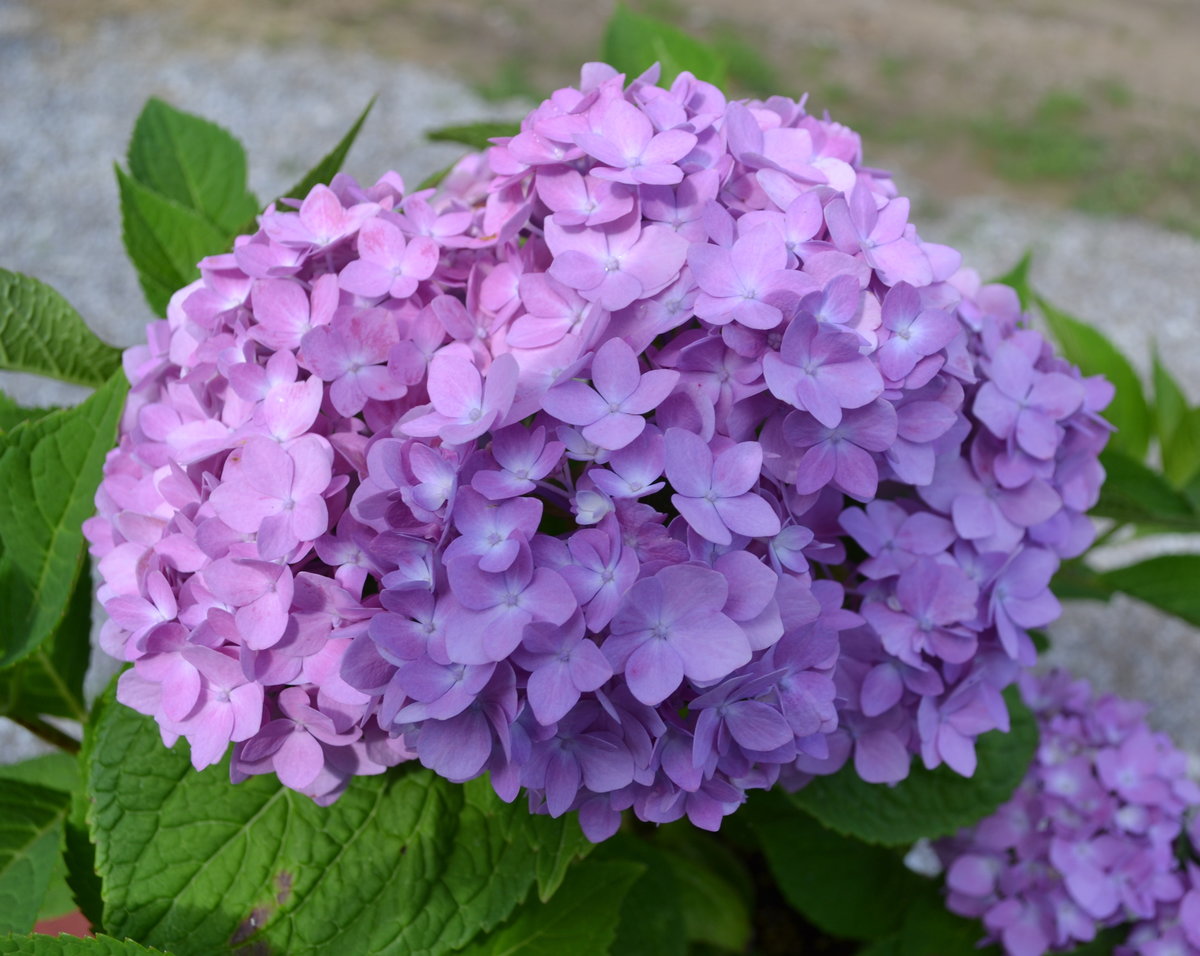
When it comes to flowers, hydrangea go for the gusto. The huge flower clusters bloom late spring into early autumn as either mophead (large round or conical clusters) or lace cap (flat, loosely arranged blooms).
While white hydrangeas will always bloom in shades of white, the pink or blue flowering varieties can be changed by the soil. The more acidic the soil, the bluer the blooms will be. Alkaline soil produces pink blooms.
#3 Astilbe
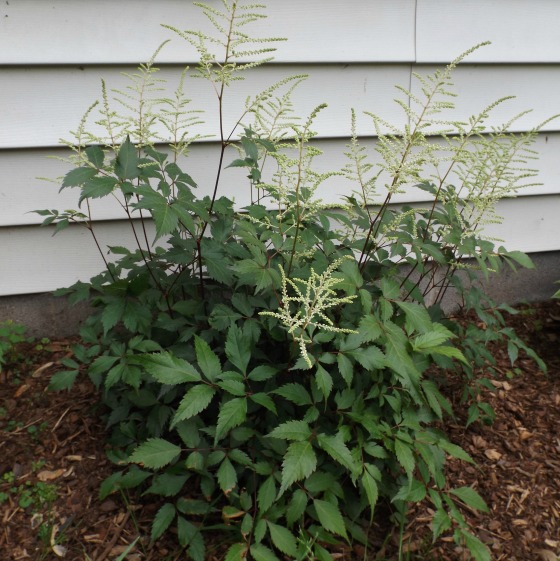
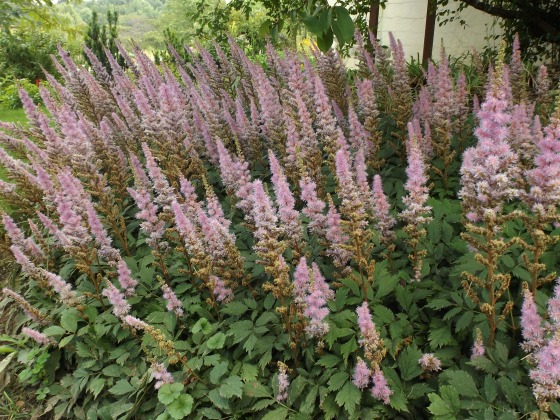
Astilbe is a cute little bush with interesting leaves that add texture to your landscape. They sport red, pink or white flowering plumes in the spring through summer months. They are tolerant of wet soil and grow well in zone 3-9.
#4 Viburnum
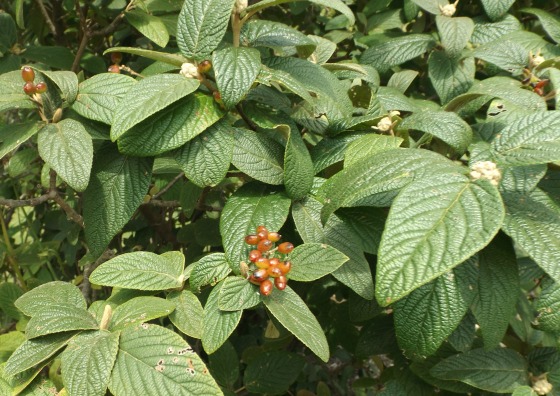
Most viburnums tolerate partial shade fairly well. There are a few like the Mapleleaf, Arrowwood or Leather Leaf that perform quite well in full shade.
The leather leaf viburnum pictured above gets pale yellow, showy blooms that are fragrant each May. As fall approaches, it gets red (or sometimes black) fruit. Viburnums can grow up to 15 tall but are easily pruned to stay at a smaller size.
#5 Taxus
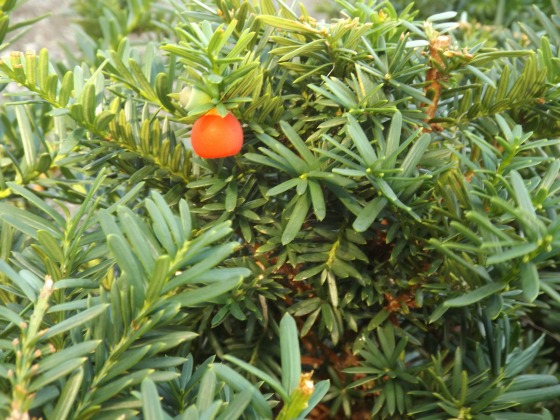
The taxus (sometimes called a Yew) is an evergreen with dense growth, making it perfect for low maintenance hedges. The females produce colorful red berries.
This shrub is tolerant of dry soils. Although the yew is a popular landscape plant, it should be noted that this plant (particularly the seed inside of the berry) is extremely poisonous. In fact, the name taxus means toxic. Please watch pets and small children around this plant.
#6 Browallia (Bush Violet)
Browallia is grown as a warm-weather annual throughout much of the United States. In zones 9 and 10 it can be kept as a perennial.
This bushy little plant grows to about 12″ high and produces lavender to dark blue trumpet-shaped blooms. The secret to keeping browallia happy in moist soil with good drainage. A few hours of filtered sunlight will also help to keep it blooming.
#7 Ajuga (Bugleweed)

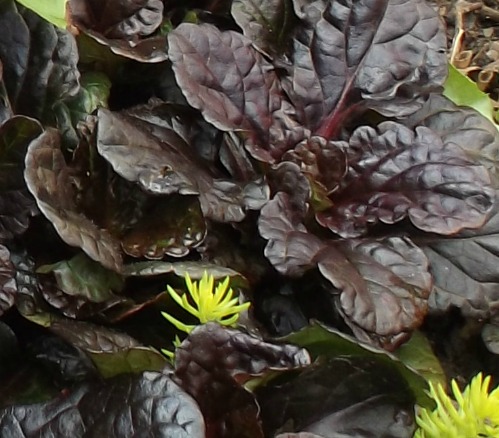
Ajuja (often called bugelweed) is a fast-growing creeping ground cover. The leaves have a rich copper or deep purple coloration. With more sunlight, the foliage tends to display more green hues.
In early summer ajuja grows a tall, purple flower stalk that is very similar to hosta. The plant itself stays under 6 inches tall. Its deer resistant and found in zones 3-10.
#8 Bleeding Heart
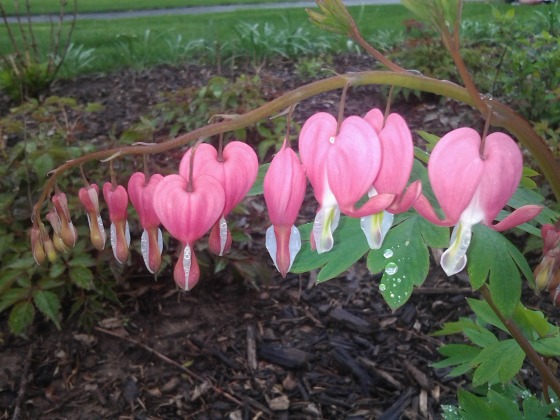
Bleeding hearts get their name from their shapely flowers. Early spring brings rows of heart-shaped flowers in shades of pink and white. The plant will grow to 2-3 feet in height and thrive in zones 3-9. They are deer resistant.
#9 Deadnettle (Lamium)
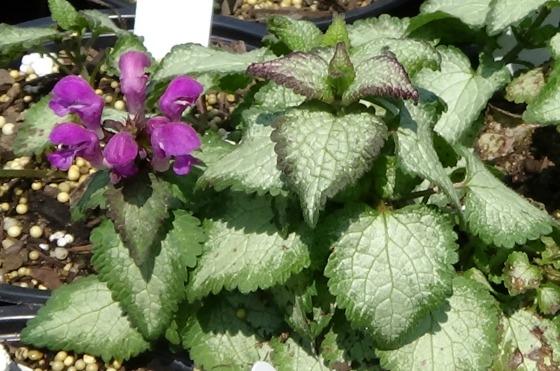
This spreading ground cover displays a beautiful silver-toned leaf. It grows best in the moist shade and is known to be deer resistant. It's a fast spreader, but not invasive. Flowers can be white, pink or purple.
#10 Clematis
Although often seen as a trailing perennial vine, clematis can be trained into shrub form. It grows best in partial- full shade and produces spectacular flowers.
Something to note (especially if you are having problems with your clematis blooming): Much like hydrangea, some clematis bloom on new wood and some bloom on old wood. Find out which type you have before doing any heavy pruning.
#11 Vinca Minor (Periwinkle)
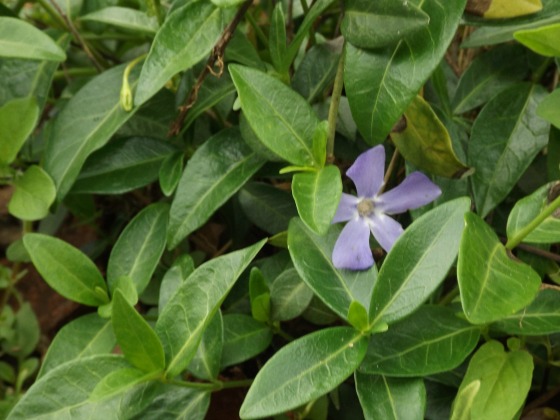
Around here, it's pretty common to run across a patch of vinca while walking through the woods. This trailing evergreen vine produces small purple flowers throughout most of the year. It's a good spreader and is great for filling in bare patches.
Vinca can also be found as vinca major (a slightly larger, more invasive version) and as annual vinca (a completely different plant that loves full sun). In some areas vinca minor is considered invasive, in others it is sold as ground cover. I have a patch in my landscape bed and I have found it to be easily contained.
#12 Pachysandra
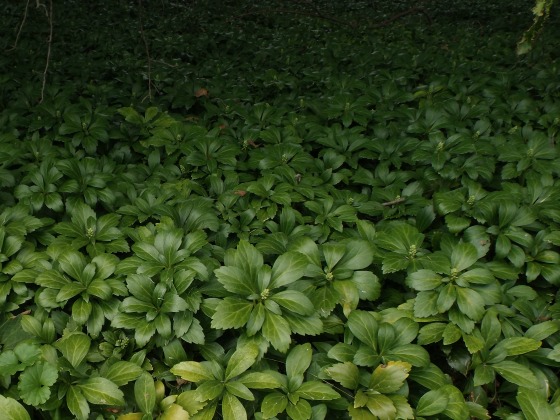
This evergreen perennial ground cover stays under 1 foot in height. It is tolerant of clay and dry soil and gets delicate white flowers in the early spring.
#13 Bunchberry Dogwood
Bunchberry dogwood is not a tree, but more of a low growing creeper. The white flowers and red berries look just like what we have come to expect from a dogwood. This plant is tolerant of wet soil and prefers cooler soil temperatures. It grows best in zones 2-6.
#14 Euonymous
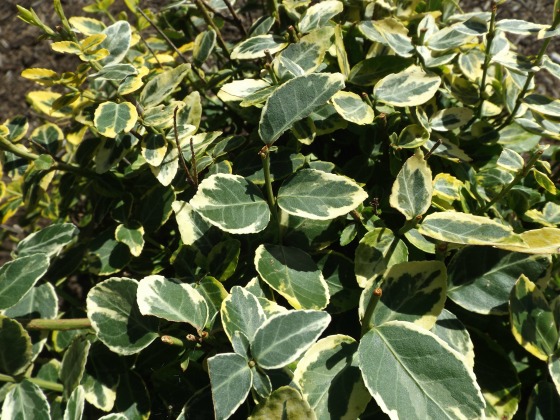
While many varieties have dainty yellow or white flowers, its the foliage that gets noticed on this plant. The variegated leaves on this low mounding hedge plant do a great job of lightening dark areas.
This compact evergreen is often pruned to about 3 ft in height. They are great for hedges, foundation areas, and erosion control. They grow in zones 4-8.
#15 Bergenia (Pigsqueak)
Bergenia is also known as Pigsqueak because of its thick, leathery cabbage-like leaves. When you rub the leaves, they squeak! This low growing plant (up to 12″) makes a great ground cover. Bergenia is best suited for zone 3-8. April and May bring white to deep pink blooms. It is tolerant of drought and dry soil.
#16 Fern
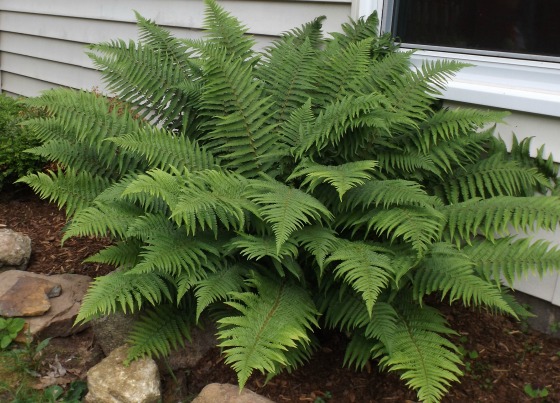
With over 12,000+ species there are very few places that a fern cannot grow. The majority prefer to grow in warm, shady areas.
Ranging in sizes from itty-bitty (2 mm) to humongous (80 feet) you're sure to find a size that fits perfectly in your shady garden. Some (such as the Japanese painted fern) come in shades of silver that almost seem to glow.
#17 Wood Sorrel (Oxalis)

Oxalis bulbs produce shamrock leaves that can be bright green, purple or any variation in between. Its dainty flowers are usually yellow or white, but they can be found in shades of pink and purple. They are incredibly easy to grow from a bulb and look best when planted in tight groupings.
#18 Kerria Japonica (Japanese Rose)
This showy, spring-flowering shrub is tough as nails. It grows in both wet or dry soil and blooms heavily with yellow pompom like flowers. The foliage resembles that of a rose- minus the thorns. This plant can be grown in zones 4-9 and typically reach a height of 3-6 ft.
#19 Creeping Thyme
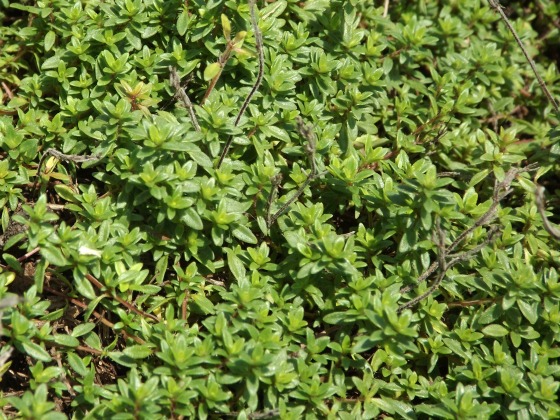
Creeping thyme is a really neat plant. It's ground cover that can be walked on. It's really low growing (2-4 inches) and spreads to about 2 feet. Its a great, low maintenance plant for walkways and filling in bare spots where the soil isn't too wet.
Creeping thyme gets small purple flowers late spring into early summer. In sunnier areas, they flower so much that you can barely see the leaves. In full shade, they won't flower quite as much.
#20 Heuchera (Coral Bells)

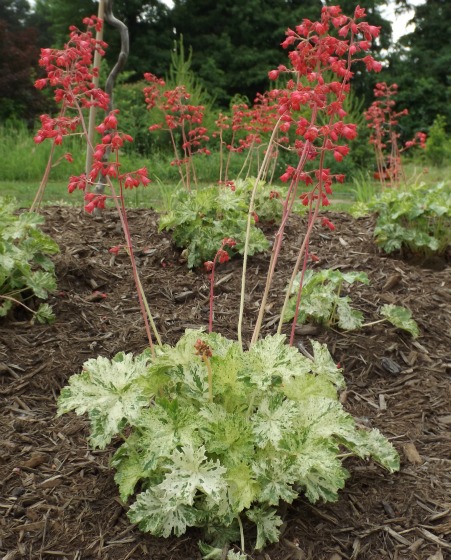
Heuchera is a low growing (6-12 inches) with mounding clumps of crisp leaves that look good enough to eat. There is a huge variety of leaf colors and patterns available.
Foliage can be variegated or marbled in shades of green, gold, purple and red. In late spring to early summer, they will produce a stalk with bell-like blooms in white, pink or red.
#21 Brunnera
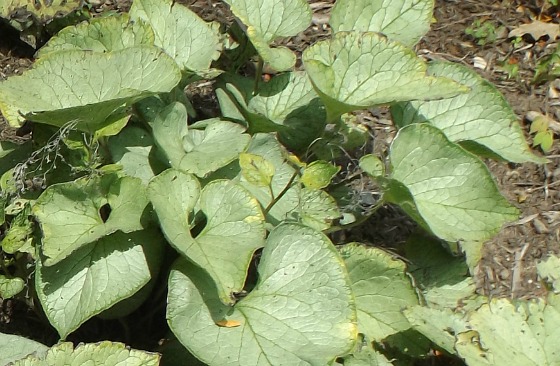
I just love the large, heart-shaped brunnera leaves. Some varieties (Like Jack Frost) have variegated foliage of silver and green. Clusters of tiny blue flowers (similar in shape to a forget-me-not) bloom each spring. Brunnera generally prefers moist soil and grow in zones 3-8.
#22 Geranium
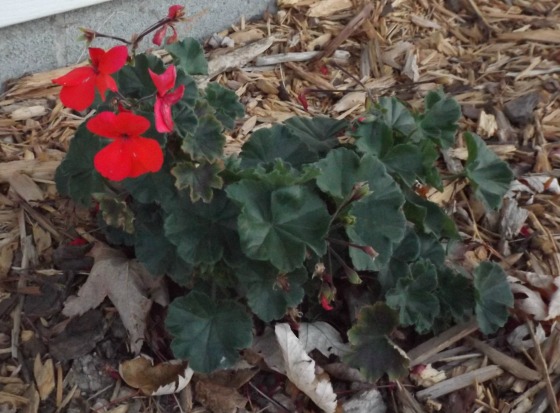
There are many types of geraniums that thrive in both sun and shade and come in every color imaginable. Most geraniums are perennial in zones 9-11 and are often planted as annuals in cooler climates. (They can be overwintered to survive for a number of years.)
#23 Hosta
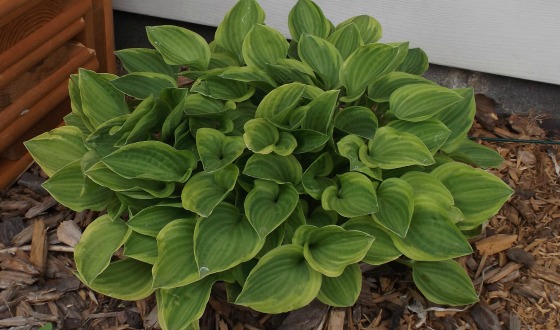
Hosta is hardy in zones 3-8 and known to be one of the simplest plants to grow. They will grow in places where nothing else will. They get a stalk of purple or white bell-shaped flowers, but they are mainly grown for their foliage. Leaves can be variegated, yellow, green, blue, ribbed, heart-shaped, striped… There's a hosta to suit everyone!
#24 Albutilon (Flowering Maple)
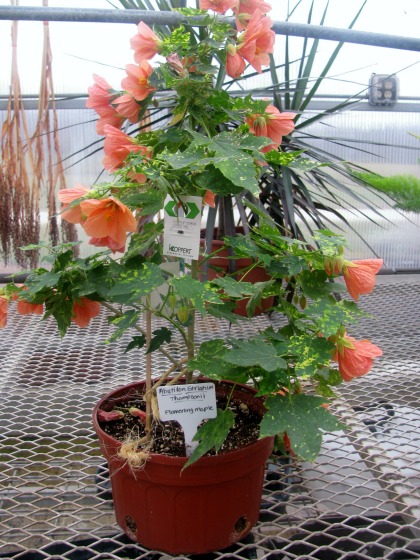
Flowering Maples (like the one seen above) are grown as houseplants here in Ohio. In zones 8-10 they can be grown outdoors as a woody shrub that reaches heights of 8 feet.
Even in full shade, this lovely plant flowers year-round in shades of red, pink, orange and yellow. The flowers look like a cross between a mallow and a hibiscus (to whom it is more closely related than the maple). Albutilon is not really a maple, but the leaves make it easily mistakable.
#25 Impatiens
When it comes to shade flowers, you cannot go wrong with impatiens. They come in nearly every color available and are a no-fuss annual that is sure to add lots of color to your shady area.
better homes and gardens red with gold bell table shade
Source: https://mikesbackyardnursery.com/2014/08/full-shade-plants/
Posted by: powellhinion.blogspot.com

0 Response to "better homes and gardens red with gold bell table shade"
Post a Comment